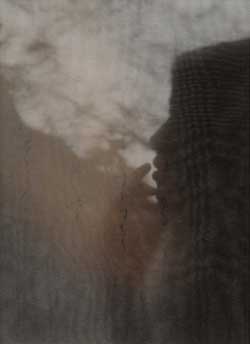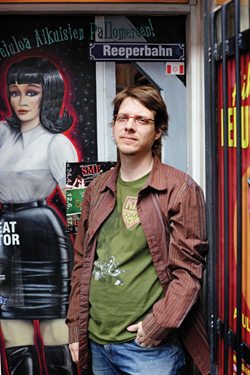 Chaco Terada, whose photographs appear in “Zen and the Art,” began practicing calligraphy as a four-year-old child in Japan. She learned by observing her father, Soseki Terada, a master calligrapher, and copying his work.
Chaco Terada, whose photographs appear in “Zen and the Art,” began practicing calligraphy as a four-year-old child in Japan. She learned by observing her father, Soseki Terada, a master calligrapher, and copying his work.
After Terada moved to the United States in her 20s, she felt freer to express herself, combining calligraphy and photography. “I often find subjects by photographing paper that has been used during calligraphy practice, or during free writing. I take time with the material to find the best way to view the calligraphy.” The inspiration behind the artwork featured in this issue of Tricycle came from memories of her childhood calligraphy classes. “I used to check my father’s work from all angles, even from the back. I folded the paper like origami and held it up to the light. It always fascinated me to see calligraphy in different ways.”

Brad Warner, who was interviewed in the Winter 2011 issue of Tricycle (“Sex, Sin, and Zen”), joins us as a columnist this issue with “A Fresh, Minty Mind: Five sure-fire tips to keep you on the cushion.” The author of four books (Hardcore Zen, Sit Down and Shut Up, Zen Wrapped in Karma Dipped in Chocolate, and Sex, Sin, and Zen) and host of one of the most popular Buddhist blogs, Hardcore Zen (hardcorezen. blogspot.com), Warner is often labeled an iconoclast, but this image is at odds with his very traditional approach to Zen practice. Warner recently alluded to his bad-boy reputation, “Five sure-fire tips to get on the cushion every day may sound innocent enough. But it’s written by one of the most evil and depraved authors currently occupying shelf space in the Eastern Religions section of your local Book Barn.” (We don’t agree.)
Based in northeastern Ohio, Warner serves as a frequent guest teacher and speaker at dharma centers in the United States and Europe.